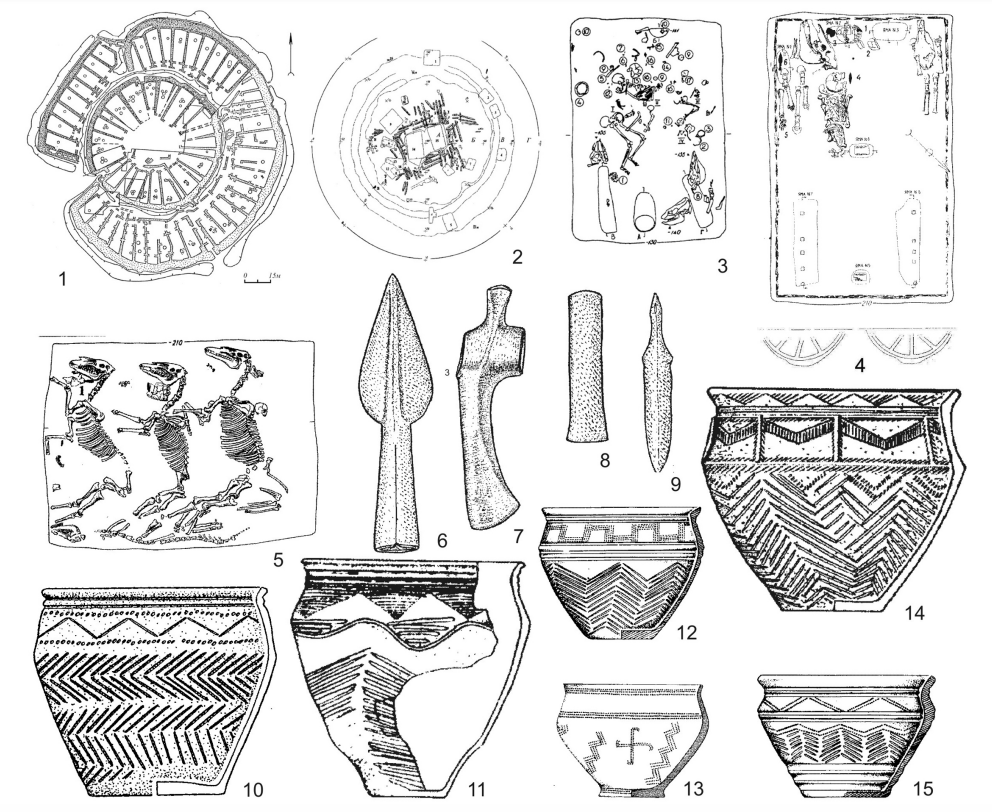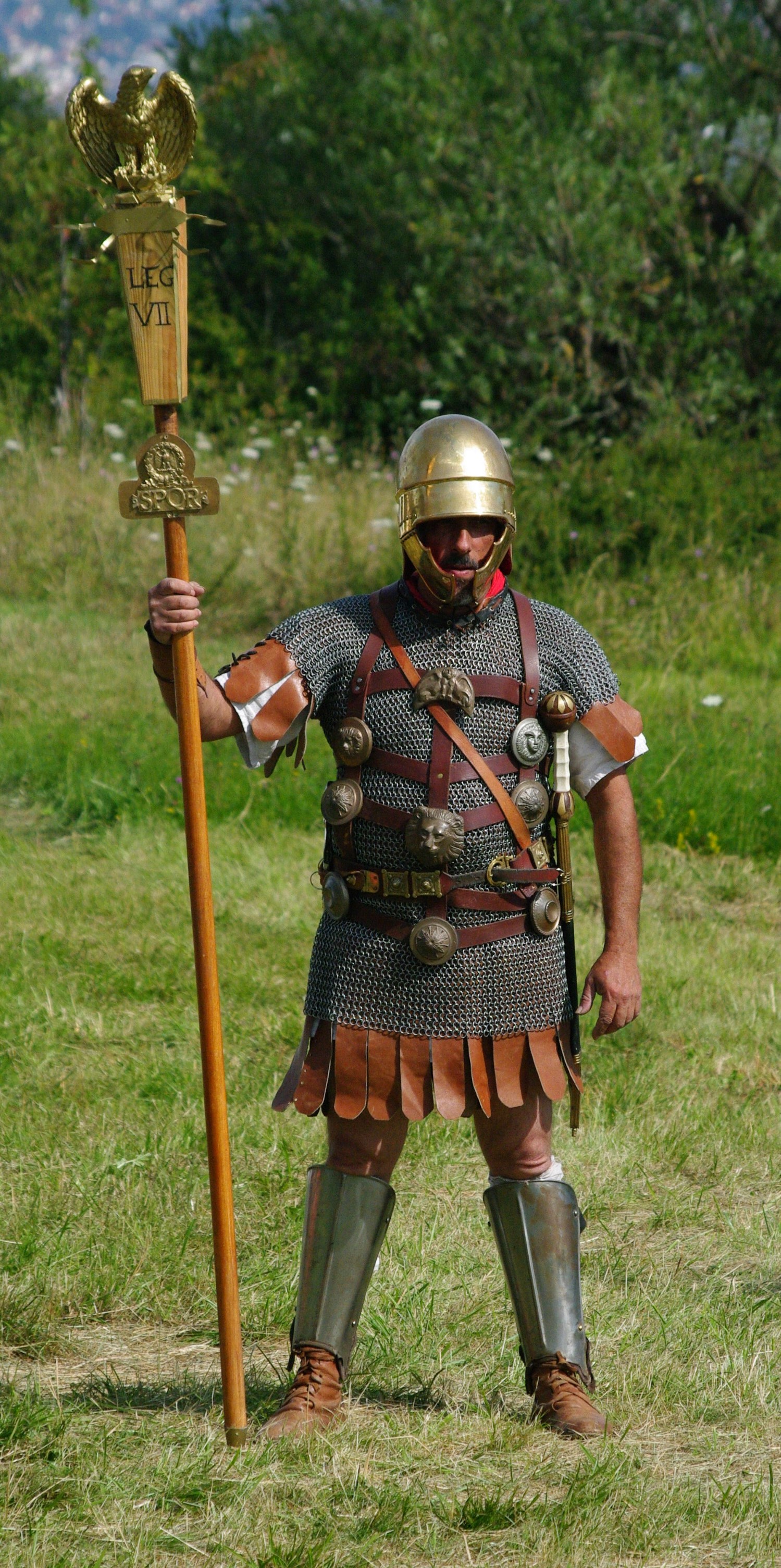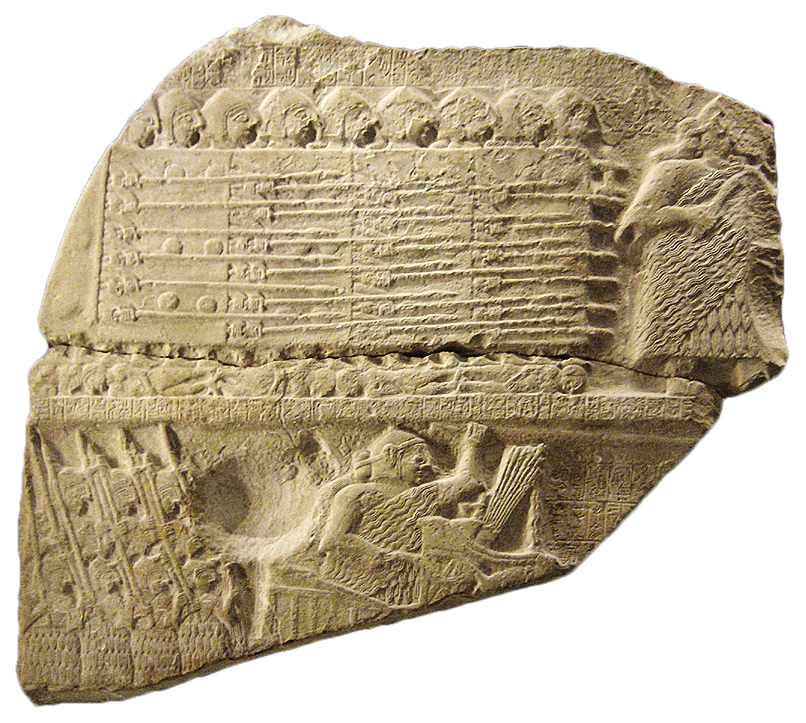|
Essedarius
An essedarius was a type of gladiator in Ancient Rome who fought from a chariot. The word was used in Caesar's Gallic Wars to describe British charioteers, who were driven over the battlefield, throwing spears at the enemy, then dismounted to fight or launched themselves along the chariot yoke. There are few references to them in the literature. In Petronius' ''Satyricon'', one fights to the accompaniment of a water-organ. Seneca remarks on the difficulty of recognising a dismounted essedarius; this has been taken to imply that their fighting from chariots was their most distinctive feature. Some, most, or all essedarii had drivers, and some chariot fighters may have been citizens; Suetonius describes Caligula's annoyance at tripping and falling, distracted by the applause of the crowd when a successful essedarius freed the slave who had driven him. If the reported armaments and skills of the British charioteers in the Gallic Wars are a guide to the gladiator type, then essedarii no ... [...More Info...] [...Related Items...] OR: [Wikipedia] [Google] [Baidu] |
List Of Roman Gladiator Types
There were many different types of gladiators in ancient Rome. Some of the first gladiators had been prisoner of war, prisoners-of-war, and so some of the earliest types of gladiators were experienced fighters; Gauls, Samnites, and ''Thraeces'' (Thracians) used their native weapons and armor. Different gladiator types specialized in specific weapons and fighting techniques. Combatants were usually pitted against opponents with different, but more or less equivalent equipment, for the sake of a fair and balanced contest. Most gladiators only fought others from within the same school or ''ludus'', but sometimes specific gladiators could be requested to fight one from another ''ludus''. Elite gladiators wore high-quality decorative armour for the pre-game parade ''(pompa)''. Julius Caesar's gladiators wore silver armour, Domitian's wore golden armour, and Nero's armour decorated with carved amber. Peacock feathers were used for plumes while tunics and loincloths had patterns in gold ... [...More Info...] [...Related Items...] OR: [Wikipedia] [Google] [Baidu] |
Gladiator
A gladiator ( , ) was an armed combatant who entertained audiences in the Roman Republic and Roman Empire in violent confrontations with other gladiators, wild animals, and condemned criminals. Some gladiators were volunteers who risked their lives and their legal and social standing by appearing in the arena. Most were despised as slaves, schooled under harsh conditions, socially marginalized, and segregated even in death. Irrespective of their origin, gladiators offered spectators an example of Rome's martial ethics and, in fighting or dying well, they could inspire admiration and popular acclaim. They were celebrated in high and low art, and their value as entertainers was commemorated in precious and commonplace objects throughout the Roman world. The origin of gladiatorial combat is open to debate. There is evidence of it in funeral rites during the Punic Wars of the 3rd century BC, and thereafter it rapidly became an essential feature of politics and social life in the ... [...More Info...] [...Related Items...] OR: [Wikipedia] [Google] [Baidu] |
Ancient Rome
In modern historiography, ancient Rome is the Roman people, Roman civilisation from the founding of Rome, founding of the Italian city of Rome in the 8th century BC to the Fall of the Western Roman Empire, collapse of the Western Roman Empire in the 5th century AD. It encompasses the Roman Kingdom (753–509 BC), the Roman Republic (50927 BC), and the Roman Empire (27 BC476 AD) until the fall of the western empire. Ancient Rome began as an Italic peoples, Italic settlement, traditionally dated to 753 BC, beside the River Tiber in the Italian peninsula. The settlement grew into the city and polity of Rome, and came to control its neighbours through a combination of treaties and military strength. It eventually controlled the Italian Peninsula, assimilating the Greece, Greek culture of southern Italy (Magna Graecia) and the Etruscans, Etruscan culture, and then became the dominant power in the Mediterranean region and parts of Europe. At its hei ... [...More Info...] [...Related Items...] OR: [Wikipedia] [Google] [Baidu] |
Chariot
A chariot is a type of vehicle similar to a cart, driven by a charioteer, usually using horses to provide rapid Propulsion, motive power. The oldest known chariots have been found in burials of the Sintashta culture in modern-day Chelyabinsk Oblast, Russia, dated to c. 1950–1880 BC and are depicted on cylinder seals from Central Anatolia Region, Central Anatolia in Kültepe dated to c. 1900 BC. The critical invention that allowed the construction of light, horse-drawn chariots was the spoked wheel. The chariot was a fast, light, open, two-wheeled conveyance drawn by two or more Equidae, equids (usually horses) that were hitched side by side, and was little more than a floor with a waist-high guard at the front and sides. It was initially used for ancient warfare during the Bronze Age, Bronze and Iron Age, Iron Ages, but after its military capabilities had been superseded by Light cavalry, light and Heavy cavalry, heavy cavalries, chariots continued to be used for travel and t ... [...More Info...] [...Related Items...] OR: [Wikipedia] [Google] [Baidu] |
Gallic Wars
The Gallic Wars were waged between 58 and 50 BC by the Roman general Julius Caesar against the peoples of Gaul (present-day France, Belgium, and Switzerland). Gauls, Gallic, Germanic peoples, Germanic, and Celtic Britons, Brittonic tribes fought to defend their homelands against an aggressive Roman Military campaign, campaign. The Wars culminated in the decisive Battle of Alesia in 52 BC, in which a complete Roman victory resulted in the expansion of the Roman Republic over the whole of Gaul. Though the collective Gallic armies were as strong as the Roman forces, the Gallic tribes' internal divisions eased victory for Caesar. Gallic chieftain Vercingetorix's attempt to unite the Gauls under a single banner came too late. Caesar portrayed the invasion as being a preemptive and defensive action, but historians agree that he fought the wars primarily to boost his political career and to pay off his debts. Still, Gaul was of significant military importance to the Romans. ... [...More Info...] [...Related Items...] OR: [Wikipedia] [Google] [Baidu] |
Britons
British people or Britons, also known colloquially as Brits, are the citizens of the United Kingdom, the British Overseas Territories, and the Crown dependencies.: British nationality law governs modern British citizenship and nationality, which can be acquired, for instance, by descent from British nationals. When used in a historical context, "British" or "Britons" can refer to the Ancient Britons, the Celtic-speaking inhabitants of Great Britain during the Iron Age, whose descendants formed the major part of the modern Welsh people, Cornish people, Bretons and considerable proportions of English people. It also refers to those British subjects born in parts of the former British Empire that are now independent countries who settled in the United Kingdom prior to 1973. Though early assertions of being British date from the Late Middle Ages, the Union of the Crowns in 1603 and the creation of the Kingdom of Great Britain in 1707 triggered a sense of British national identit ... [...More Info...] [...Related Items...] OR: [Wikipedia] [Google] [Baidu] |
Petronius
Gaius Petronius Arbiter"Gaius Petronius Arbiter" Britannica.com. (; ; ; sometimes Titus Petronius Niger) was a Roman Empire, Roman courtier during the reign of Nero (). He is generally believed to be the author of the ''Satyricon'', a satire, satirical novel believed to have been written during the Neronian era. He is one of the most important characters in Henryk Sienkiewicz' historical novel ''Quo Vadis (novel), Quo Vadis'' (1895). Leo Genn portrays him in Quo Vadis (1951 film), the 1951 film of the same name. Life A reference to Petronius by Sidonius Apollinaris places him, or his ''Satyricon'', in Massalia (ancient Marseille). He might have been born and educated there. Tacitus, Plutarch and Pliny the Elder describe Petronius as the ''elegantiae arbiter'' (also phrased '' ...[...More Info...] [...Related Items...] OR: [Wikipedia] [Google] [Baidu] |
Seneca The Younger
Lucius Annaeus Seneca the Younger ( ; AD 65), usually known mononymously as Seneca, was a Stoicism, Stoic philosopher of Ancient Rome, a statesman, a dramatist, and in one work, a satirist, from the post-Augustan age of Latin literature. Seneca was born in Córdoba, Spain, Colonia Patricia Corduba in Hispania, and was trained in rhetoric and philosophy in Rome. His father was Seneca the Elder, his elder brother was Lucius Junius Gallio Annaeanus, and his nephew was the poet Lucan. In AD 41, Seneca was exiled to the island of Corsica under emperor Claudius, but was allowed to return in 49 to become a tutor to Nero. When Nero became emperor in 54, Seneca became his advisor and, together with the praetorian prefect Sextus Afranius Burrus, provided competent government for the first five years of Nero's reign. Seneca's influence over Nero declined with time, and in 65 Seneca was executed by forced suicide for alleged complicity in the Pisonian conspiracy to Assassination, assassinate ... [...More Info...] [...Related Items...] OR: [Wikipedia] [Google] [Baidu] |
Suetonius
Gaius Suetonius Tranquillus (), commonly referred to as Suetonius ( ; – after AD 122), was a Roman historian who wrote during the early Imperial era of the Roman Empire. His most important surviving work is ''De vita Caesarum'', commonly known in English as '' The Twelve Caesars'', a set of biographies of 12 successive Roman rulers from Julius Caesar to Domitian. Other works by Suetonius concerned the daily life of Rome, politics, oratory, and the lives of famous writers, including poets, historians, and grammarians. A few of these books have partially survived, but many have been lost. Life Gaius Suetonius Tranquillus was probably born about AD 69, a date deduced from his remarks describing himself as a "young man" 20 years after Nero's death. His place of birth is disputed, but most scholars place it in Hippo Regius, a small north African town in Numidia, in modern-day Algeria. It is certain that Suetonius came from a family of moderate social position, that his fat ... [...More Info...] [...Related Items...] OR: [Wikipedia] [Google] [Baidu] |
Caligula
Gaius Caesar Augustus Germanicus (31 August 12 – 24 January 41), also called Gaius and Caligula (), was Roman emperor from AD 37 until his assassination in 41. He was the son of the Roman general Germanicus and Augustus' granddaughter Agrippina the Elder, members of the Julio-Claudian dynasty, first ruling family of the Roman Empire. He was born two years before Tiberius became emperor. Gaius accompanied his father, mother and siblings on campaign in Germania, at little more than four or five years old. He had been named after Gaius Julius Caesar, but his father's soldiers affectionately nicknamed him "Caligula" ('little boot'). Germanicus died in Antioch in 19, and Agrippina returned with her six children to Rome, where she became entangled in a bitter feud with Emperor Tiberius, who was Germanicus' biological uncle and adoptive father. The conflict eventually led to the destruction of her family, with Caligula as the sole male survivor. In 26, Tiberius withdrew from pub ... [...More Info...] [...Related Items...] OR: [Wikipedia] [Google] [Baidu] |
Spear
A spear is a polearm consisting of a shaft, usually of wood, with a pointed head. The head may be simply the sharpened end of the shaft itself, as is the case with Fire hardening, fire hardened spears, or it may be made of a more durable material fastened to the shaft, such as bone, flint, obsidian, copper, bronze, iron, or steel. The most common design for hunting and/or warfare, since modern times has incorporated a metal spearhead shaped like a triangle, lozenge (shape), diamond, or Glossary of leaf morphology, leaf. The heads of fishing spears usually feature multiple sharp Tine (structural), points, with or without barbs. Spears can be divided into two broad categories: those designed for thrusting as a melee weapon (including weapons such as lances and Pike (weapon), pikes) and those designed for throwing as a ranged weapon (usually referred to as javelins). The spear has been used throughout human history as a weapon for hunting and/or fishing and for warfare. Along with ... [...More Info...] [...Related Items...] OR: [Wikipedia] [Google] [Baidu] |
Sword
A sword is an edged and bladed weapons, edged, bladed weapon intended for manual cutting or thrusting. Its blade, longer than a knife or dagger, is attached to a hilt and can be straight or curved. A thrusting sword tends to have a straighter blade with a pointed tip. A slashing sword is more likely to be curved and to have a sharpened cutting edge on one or both sides of the blade. Many swords are designed for both thrusting and slashing. The precise definition of a sword varies by historical epoch and geographic region. Historically, the sword developed in the Bronze Age, evolving from the dagger; the Bronze Age sword, earliest specimens date to about 1600 BC. The later Iron Age sword remained fairly short and without a crossguard. The spatha, as it developed in the Late Roman army, became the predecessor of the European sword of the Middle Ages, at first adopted as the Migration Period sword, and only in the High Middle Ages, developed into the classical Knightly sword, ar ... [...More Info...] [...Related Items...] OR: [Wikipedia] [Google] [Baidu] |







